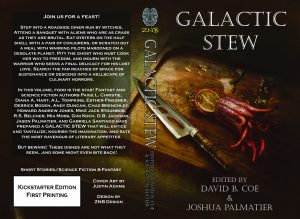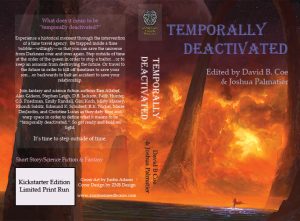It will come as no secret to anyone who knows me that I am a huge fan of The West Wing, in particular Seasons 1-4, when series creator Aaron Sorkin was writing nearly every episode, and his creative partner, Thomas Schlamme was directing most of them.
Sorkin talks often about writing musically, about bringing to his dialogue cadence, rhythm, motif, and even melody and refrain. Take a moment to watch this clip from one of the best episodes in the series’ long and storied run, “In the Shadow of Two Gunmen, Part II.” Listen to all of it, but pay particular attention to Ron’s monologue, starting at time stamp 1:15.
Notice not only the gorgeous cadence of all he says, but also the return to two refrains: “It was an act of mad men,” and, from earlier in the scene, “The Secret Service doesn’t comment on procedure.”
Often in these Writing-Tip Wednesday posts, I will offer advice that is concrete and easily implemented. This is not one of those posts.
Thinking musically about our writing is an abstract idea, but, I believe, a helpful and important one. I strive, in my dialogue and my prose, to find a musical cadence, to create a rhythm that carries my narrative along. We all know what it feels like to write a clunky phrase or sentence or paragraph. Hell, I’ve written entire chapters that were clunky. I would imagine some of my less generous reviewers on Amazon would say I have entire books that are.
But of course, it’s easy to say “write musically, think about rhythm and beat as you craft your stories.” It’s another entirely to explain how this is done. And I should pause here to say that simply repeating phrases in our writing doesn’t make us Aaron Sorkin. Sorkin is a master, and this technique works beautifully for him. That doesn’t mean we can repeat a few lines and say, “Hey, look! I’m writing musically!” Learning to write this way comes with years of practice, and even more years of reading. And the process is not easy to describe in concrete terms. The books of Guy Gavriel Kay, my favorite fantasy author, are incredibly musical – like symphonies. But I would be hard-pressed to tell you what specific things he does to achieve this. He just does.
Here, though, are a couple of tips that might help.
Let’s stick with that symphony analogy. Consider a movement from your favorite piece of classical music. No doubt its tempo varies from section to section: it has moments when the pace of the music quickens and others when it slows. Likely the dynamics vary as well, thundering in one passage, softening in another. If you’re not a fan of classical music, think about your favorite rock album. Chances are the rhythms and moods of the songs vary — an upbeat, fast track, followed by a ballad, followed by something moody and tense, followed by another rocker… You get what I mean.
Writing, to my mind, works best when it follows a similar pattern. Some writers like their entire novels to go at one speed — fast, fast, fast. They create one action scene after another, leaving readers breathless and, they hope, eager for more. That is a perfectly legitimate approach, but I don’t like to write that way, and I don’t particularly like to read books of that sort. I prefer to intersperse crescendos of action with quieter moments, pushing the plot forward and then allowing my readers, and my characters, to catch their breath and contemplate the implications of what has just occurred Some scenes must be breakneck and loud — absolutely. Others, though, should be softer, slower. A battle scene, followed by a spoken confrontation, followed by a love scene, followed by hand-to-hand combat, followed by a chase, followed by a key conversation, etc. The narrative flows this whole time — writing musically is not meant as an excuse to insert scenes that don’t advance your story — but sometimes it flows with cymbals crashing and sometimes it flows with the sound of a single violin.
Another way to think musically about writing: Again, think about that symphony or your favorite song. And think about the ways in which melody works. Some phrases end with the perfect note, resolving the musical tension; others end more discordantly, ratcheting up harmonic conflict and propelling the piece in question forward. Storytelling works the same way. I try to vary the narrative energy. I finish some chapters with a resolution of conflict; I end others by heightening tension, by leaving things hanging, by leaving my readers still waiting for that resolving note.
Rhythm and tempo, dynamics and volume, tension and resolution, harmony and discord. I find that these terms work equally well in describing musical performance and the written word. You might find that incorporating these concepts into your narrative will help you find the perfect pace and mood for your current project.
Keep writing!











 What is the difference between an idea and a story? It sounds like a basic question, but we have just begun the
What is the difference between an idea and a story? It sounds like a basic question, but we have just begun the  I have touched on the subject of creative ideas in other Writing-Tip Wednesday posts this year (
I have touched on the subject of creative ideas in other Writing-Tip Wednesday posts this year (

